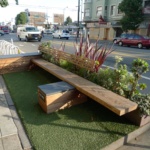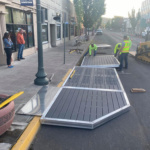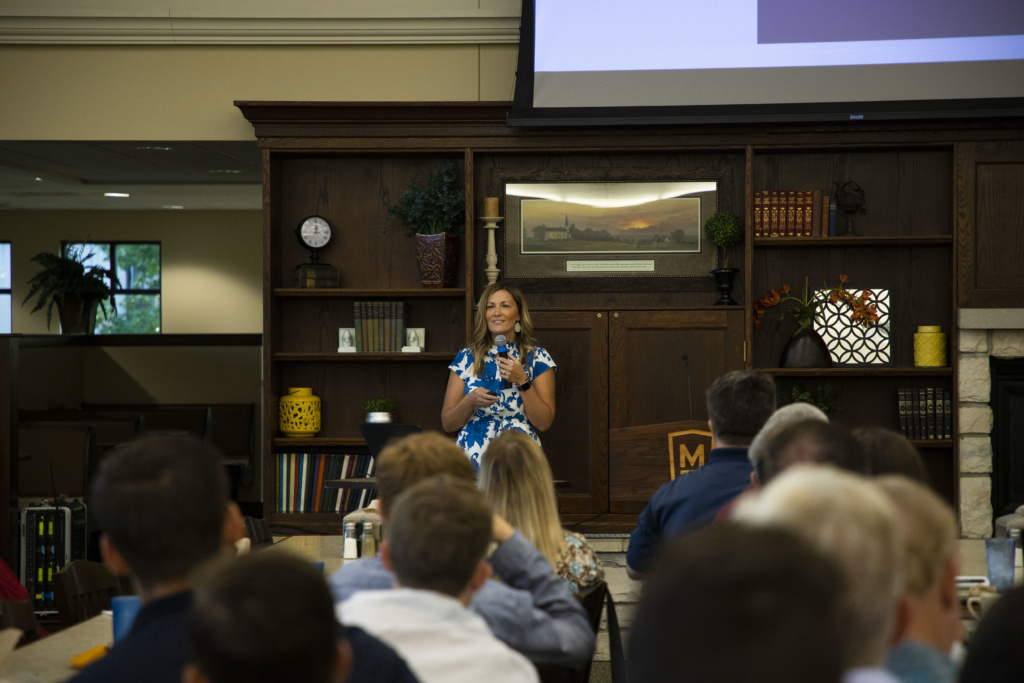Watertown Reconstruction Task Force | Leadership Breakfast 9.8.21
Faculty, staff, and students of Maranatha Baptist University were joined by members of the Watertown business community to learn about the Downtown Main Street Reconstruction Task Force. Five members of the Task Force were also in attendance.
After a delightful breakfast, Steve Board, Director of Development at Maranatha, opened the Leadership Breakfast with prayer and a few announcements about the upcoming events. He gave the floor to Alex Allon, Watertown’s Strategic Initiatives and Development Coordinator. Allon was joined by Watertown Mayor Emily McFarland and Laurie Hoffmann, the citizen-at-large member of the Task Force.
The Task Force Process
Allon elaborated on the current issues with the Main Street construction which includes an aging underground infrastructure and road surface. Main Street’s last improvements were in 1967 and the utilities, road surface, and amenities need an upgrade.
To undertake the challenging project, the city put together a Task Force that includes city and state staff, elected officials, downtown organizations, and members from the business community. The Task Force assembled an initial recommended plan and now welcome feedback from the community; presenting at the Leadership Breakfast was the first step in gathering that feedback.
Allon explained the Task Force’s three-pronged approach:
- Envisioning process and recommendations
- Community engagement and feedback and revisions
- Hearing business needs and providing support
The Task Force established a process of reimagining Main Street which starts with establishing the overarching project goals, then moves to creating a set of wants and needs, and ends with evaluating and ranking the wants and needs based on conformity to project goals.
There are five criteria the Task Force used in evaluating their recommendations:
- High-quality design
- Pedestrian-friendly
- Retail and commercial oriented
- Universal accessibility and improved ADA compliance
- Forward-looking yet responsive and sensitive to the history of Main Street
Allon then recognized Laurie Hoffmann who shared the recommendations for reconstructing Main Street in three ways: aesthetics, infrastructure, and pedestrian-oriented projects.
Main Street Recommendations
Hoffmann presented seven recommendations from the Task Force for aesthetic improvement:

An example of a parklet
- Install and update current murals
- Add art and sculptures on sidewalks
- Install pedestrian-level flowerpots
- Install well-designed trash receptacles
- Create a strategic plan for “vistas” on Main Street
- Install Main Street entrance feature
- Install permanent “parklet” and “pedlets” on Main Street

An example of a pedlet
She presented eight recommendations for the infrastructure:
- Update and upgrade utilities throughout construction
- Conduct evaluation study of parking on Main Street
- Install infrastructure for electric vehicle charging stations
- Install traffic lights that allow pedestrians to stop traffic
- Improve design of traffic lights
- Install taller lampposts
- Install infrastructure to accommodate 5G on light poles
- Underlighting Cole Bridge
The last aspect that Hoffmann presented was eight pedestrian-oriented recommendations:
- Wider sidewalks
- Create meeting spaces
- Install well-designed seating at pedestrian-friendly intervals
- Install well-designed wayfinding signage
- Install curb bump-outs to improve traffic calming measures
- Relocate crosswalks for improved pedestrian flow and safety
- Incorporate features for the blind and deaf into crosswalks
- Create continental crosswalks for improved pedestrian safety
Downtown Recommendations
After Hoffmann, Mayor McFarland presented recommendations from the Task Force for the Watertown downtown. She began with the aesthetic aspect and recommended four improvements:
- Plan for installation and updating of murals
- Improve aesthetics of existing parking lots
- Remove vegetation to open views to the river and create vistas
- Install trees and/or plantings to soften aesthetics
Next, McFarland presented five infrastructure recommendations:
- Install infrastructure for decorative lighting and electrical use
- Install infrastructure for electric vehicle sharing stations
- Install infrastructure to accommodate 5G on light poles
- Reconstruct and improve sea walls along the river Downtown

Example of a multi-purpose bubbler
- Install a multi-purpose bubbler
She also gave four pedestrian-orientated recommendations:
- Install well-designed wayfinding signage
- Create meetings spaces
- Create and or identify space for winter activities and programming
- Implement the temporary closing of parts of certain streets for programming.
In addition to the previously mentioned recommendations, McFarland brought forward five recommendations for future planning in the downtown area:
- Perform comprehensive parking study to plan for future parking needs
- Perform transportation network evaluation Downtown to evaluate one-way streets and plan for bike usage
- Implement plans for developing the river walk north of Cole Bridge
- Develop a plan for creative alley restoration and public art
- Plan for green infrastructure improvements downtown
McFarland explained that the next steps would be gathering community feedback, revising and finalizing recommendations, presenting to public works, and identifying recommendations from public works to address prior to reconstruction.
Question and Answer
Mayor McFarland opened the floor for attendees to ask questions. The first few questions dealt with the financial burden on the community and plans to pay for the recommendations.
In response to these questions, McFarland shared that these recommendations are not going to happen in the next 5-10 years. These recommendations are for a long-term plan that will be partially funded through grants while some funds will come from the 5-year capital plan where the City of Watertown already has plans to borrow money.
One attendee raised the question that since the timeline for these recommendations is longer than Mayor McFarland is in office, how can she guarantee that the plan will continue? McFarland assured those present that there are over 200 people working on the continuation of this project. This team is working to document, support, and structure the plan so that the next mayor can pick it up and continue leading.
One important aspect that Allon, Hoffmann, and McFarland emphasized throughout the presentation was that the Task Force wants to work with the community. They want to work with Watertown’s business owners, hear their concerns, and find solutions tailored to their situation.
The Task Force is working hard to make sure Main Street businesses can stay open and function during construction. With over 100 unique storefronts and few vacancies, the Task Force is looking to enhance the public perception of what the private sector has already done.
“We’re the 34th largest city in the state,” McFarland stated. “We’re not looking to be like every other small town; we want to be the town we already are.”
Watch the presentation here.
Find out more about future Leadership Breakfasts here.


